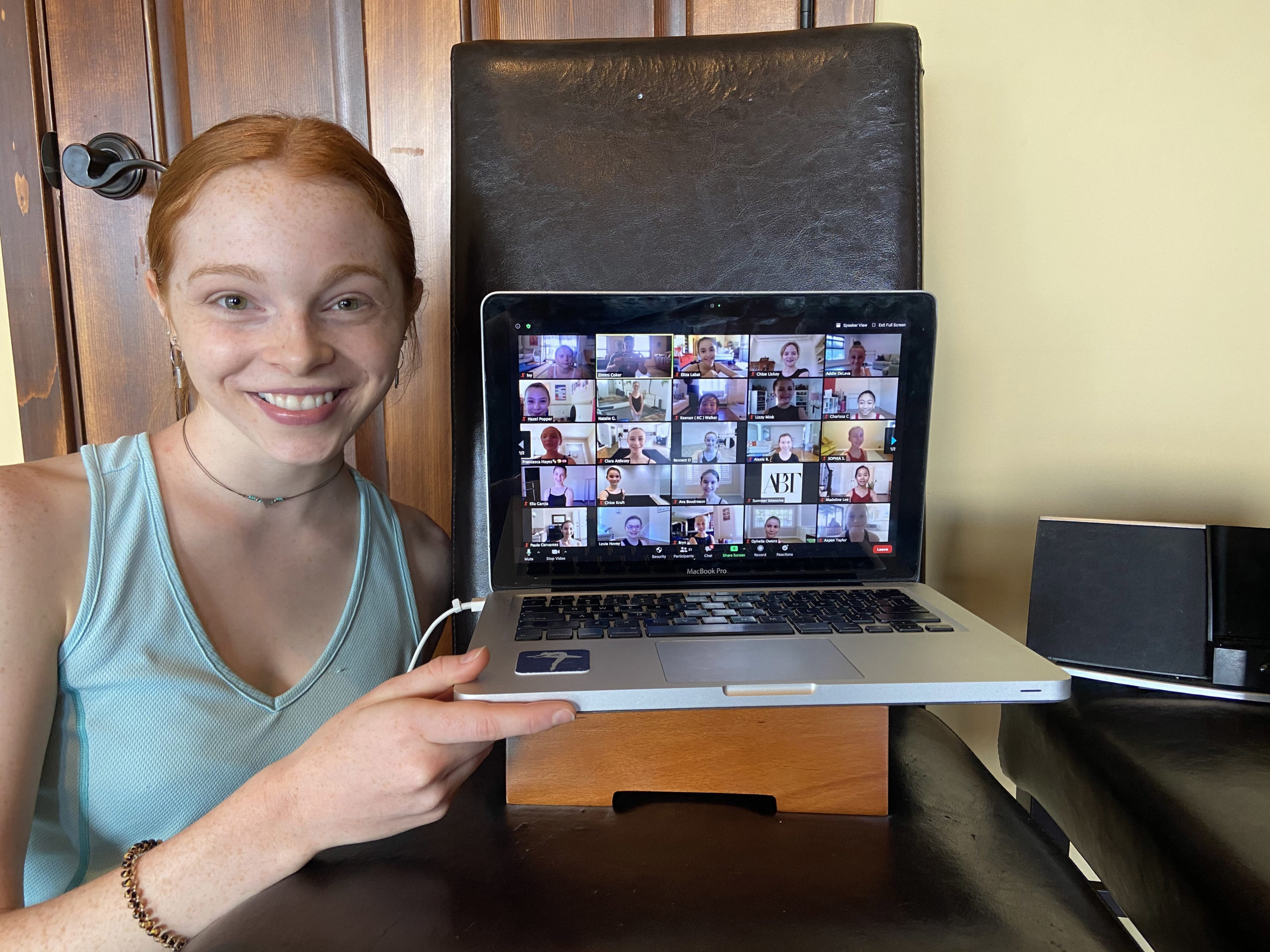What Role Should Virtual Intensives Play In Your Training This Year?
The forecast for dance in summer 2022 seems bright: Most intensives are planning to be in person, with mitigation efforts in place to prioritize participants’ health and safety. But does that mean online-only intensives are a relic of the past? Not necessarily. Here are some things to consider as you make your summer plans this year.
Think “And,” Not “Or”
“There’s nothing like the experience of everyone being in the same room, working on the same things,” says Kate Lydon, artistic director of American Ballet Theatre’s summer intensive programs. It’s certainly true that online classes have a hard time replicating the energy and camaraderie of the studio. That said, summer intensives are designed to be finite—after two or four or even eight weeks, the program is over. What if you want more dance in your summer?
“For me, the best-case scenario is for students to go to an intensive in person, and to look at online summer programs as a complement,” says Jon Arpino, founder and CEO of virtual-training juggernaut CLI Studios. If you’re at an in-person intensive in June and July, for example, you might choose an online program in August. CLI Studios’ Summer Xperience is broken down into weeklong courses, so it’s easy for dancers to sign up for a week between other commitments. Similarly, Lydon recalls students enrolling in ABT’s 2021 online intensives for a two-week session at the start of the summer, then attending a different in-person program later in the summer. Depending on your time zone (and stamina), you might even take in-person classes during the day and continue with virtual training in the evening, or vice versa.
“What I like about online training is accessibility,” Arpino says. “In-person summer programs are not always affordable, and they may require travel.” Once you’ve determined what is feasible for your family in terms of budget and logistics, you can investigate the myriad online options that have cropped up over the past two years to build out your summer.
Mix It Up
Online intensives can offer you a chance to get out of your comfort zone. “It can be less daunting for students to try something new online,” Arpino explains. “Being somewhere that’s comfortable for you—at home by yourself, or maybe with your friends at your home studio—can help you feel safer exploring and making mistakes.” Perhaps you’re a serious bunhead who wants to try tap, or a hip-hop dancer hoping to brush up on your contemporary basics. You could do an in-person intensive in your preferred genre while enrolling in a beginner course online that will broaden your skill set.
Look for Courses, Not Classes
While you can certainly supplement your in-person dance training with online drop-in classes, you may be better served by a more structured virtual course—something that mimics traditional summer intensives. Signing up for a curated course rather than a single class gives you a chance to dig deeper. It also lets your instructors follow and comment on your progress. “We saw such a big improvement in the dancers who did our virtual intensives last summer,” Lydon says. “Even over Zoom, their hard work was obvious.” Although ABT’s virtual summer program was pared down from the in-person version—a condensed training day, with less focus on repertory and no concluding performance—it was still crafted with the goal of maximizing growth in a short amount of time.
“Think about what’s going to help you become the dancer you envision becoming,” Lydon urges. “Do your research and follow your passion.”
3 Tips for Streaming Success
Set up your space: If you have access to a dance studio with barres and other equipment, that will certainly help—but space isn’t everything. “Don’t be discouraged if you don’t have all the resources,” ABT’s Kate Lydon says. “Engagement is the number one thing that is going to make you a better dancer.”
Be ready to repeat: Because many virtual programs include prerecorded sessions, being willing to take a class multiple times can be part of the deal. “You can learn a lot the second or third time,” CLI’s Jon Arpino points out. “Repetition is great for dance, and that’s something you don’t always get in person.” Registering for CLI Studios’ full Summer Xperience garners you a year’s access to the site’s content library, so you can even return to a class months later.
Practice on your own: In an online intensive, you may also be asked to rehearse material on your own time. “Our faculty mentors might ask you to work on a piece of choreography for the week,” Arpino explains, “and then perform it on Friday for feedback.” Without external factors such as mandatory rehearsal slots and in-person supervision, your motivation has to come from within.




